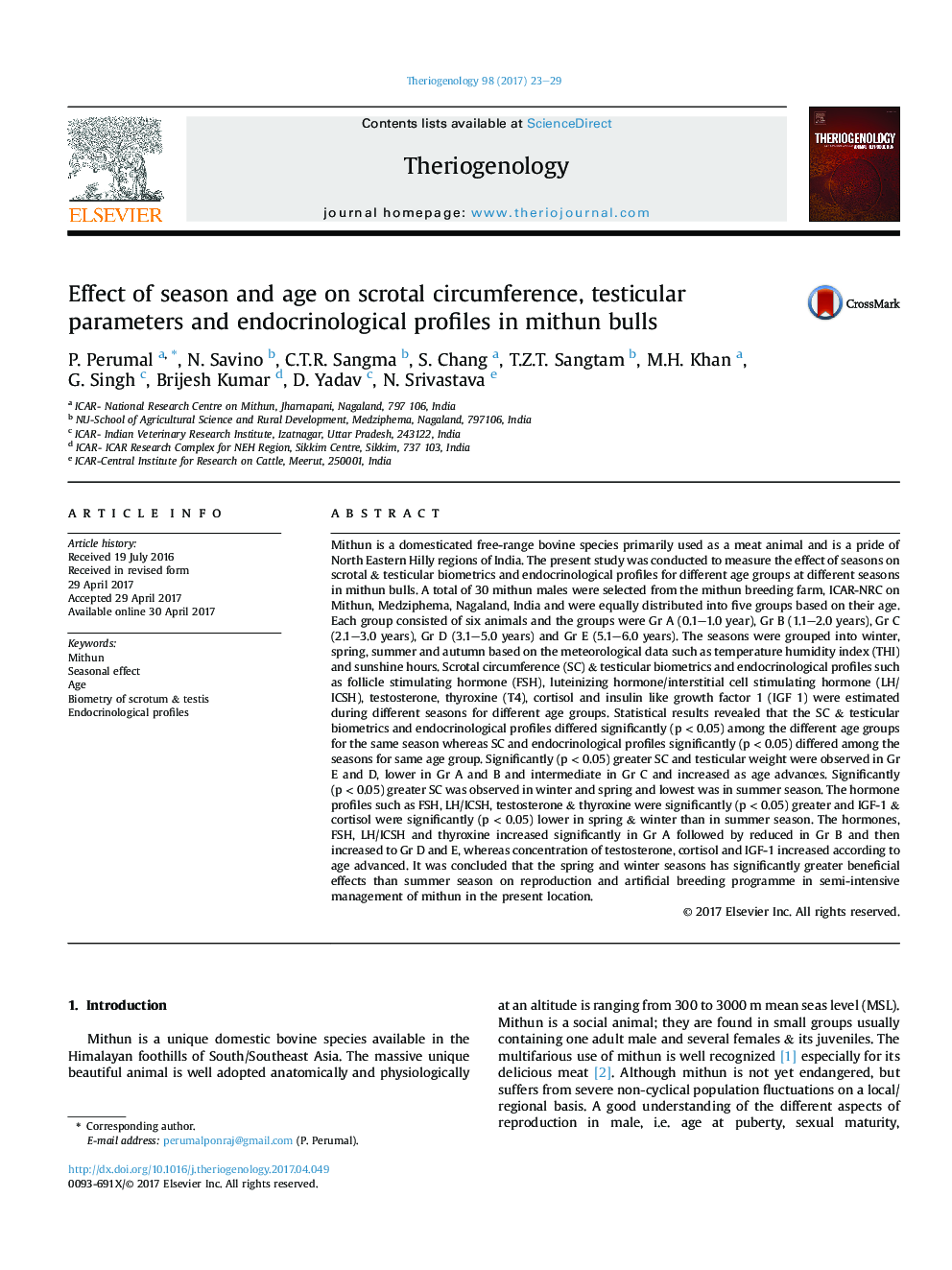| Article ID | Journal | Published Year | Pages | File Type |
|---|---|---|---|---|
| 5523065 | Theriogenology | 2017 | 7 Pages |
â¢Significant seasonal and age effects was observed on endocrinological profiles and scrotal & testicular parameters in mithun.â¢Spring and winter seasons are more optimum seasons for planning of breeding programme for mithun.â¢The study helps to assess the breeding soundness evaluation in mithun species.
Mithun is a domesticated free-range bovine species primarily used as a meat animal and is a pride of North Eastern Hilly regions of India. The present study was conducted to measure the effect of seasons on scrotal & testicular biometrics and endocrinological profiles for different age groups at different seasons in mithun bulls. A total of 30 mithun males were selected from the mithun breeding farm, ICAR-NRC on Mithun, Medziphema, Nagaland, India and were equally distributed into five groups based on their age. Each group consisted of six animals and the groups were Gr A (0.1-1.0 year), Gr B (1.1-2.0 years), Gr C (2.1-3.0 years), Gr D (3.1-5.0 years) and Gr E (5.1-6.0 years). The seasons were grouped into winter, spring, summer and autumn based on the meteorological data such as temperature humidity index (THI) and sunshine hours. Scrotal circumference (SC) & testicular biometrics and endocrinological profiles such as follicle stimulating hormone (FSH), luteinizing hormone/interstitial cell stimulating hormone (LH/ICSH), testosterone, thyroxine (T4), cortisol and insulin like growth factor 1 (IGF 1) were estimated during different seasons for different age groups. Statistical results revealed that the SC & testicular biometrics and endocrinological profiles differed significantly (p < 0.05) among the different age groups for the same season whereas SC and endocrinological profiles significantly (p < 0.05) differed among the seasons for same age group. Significantly (p < 0.05) greater SC and testicular weight were observed in Gr E and D, lower in Gr A and B and intermediate in Gr C and increased as age advances. Significantly (p < 0.05) greater SC was observed in winter and spring and lowest was in summer season. The hormone profiles such as FSH, LH/ICSH, testosterone & thyroxine were significantly (p < 0.05) greater and IGF-1 & cortisol were significantly (p < 0.05) lower in spring & winter than in summer season. The hormones, FSH, LH/ICSH and thyroxine increased significantly in Gr A followed by reduced in Gr B and then increased to Gr D and E, whereas concentration of testosterone, cortisol and IGF-1 increased according to age advanced. It was concluded that the spring and winter seasons has significantly greater beneficial effects than summer season on reproduction and artificial breeding programme in semi-intensive management of mithun in the present location.
